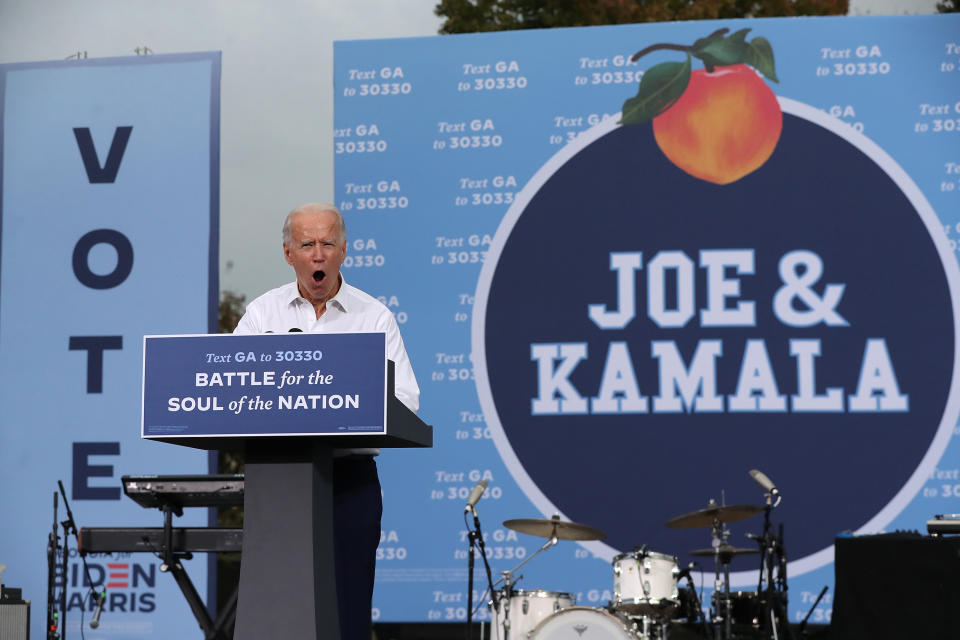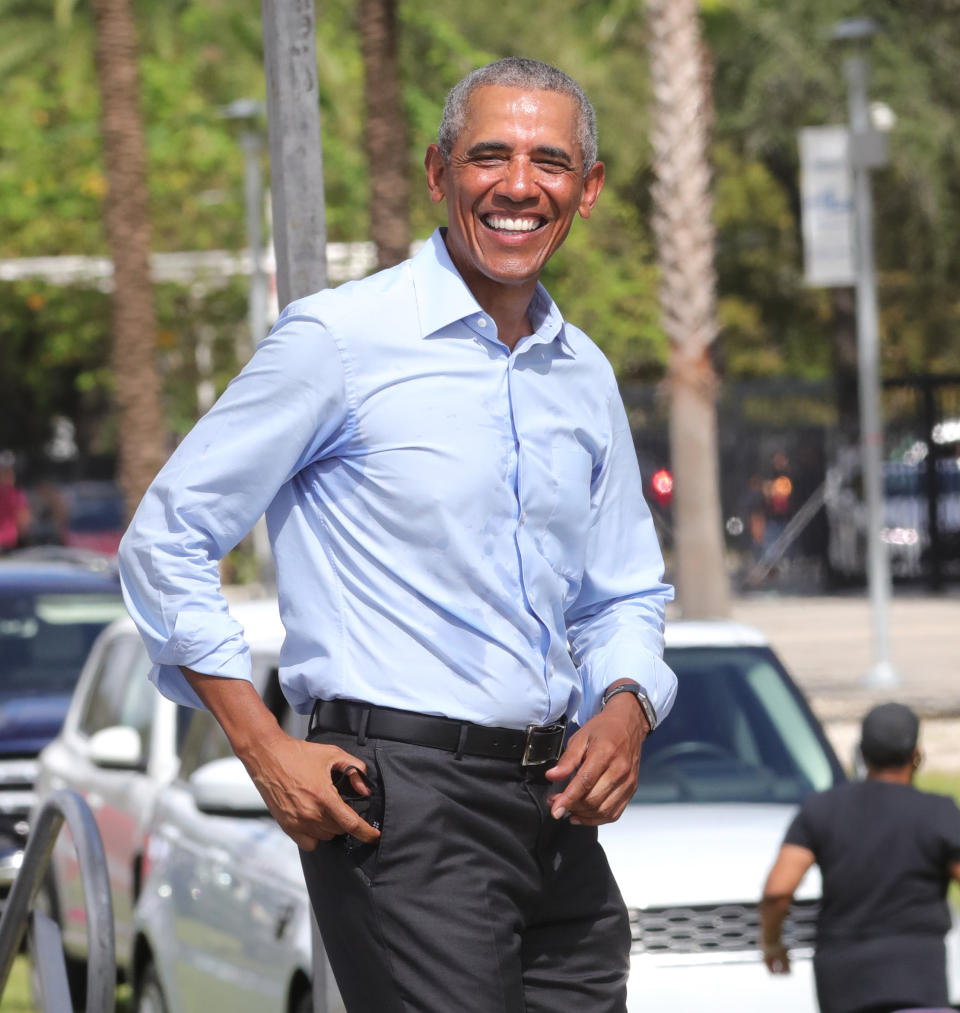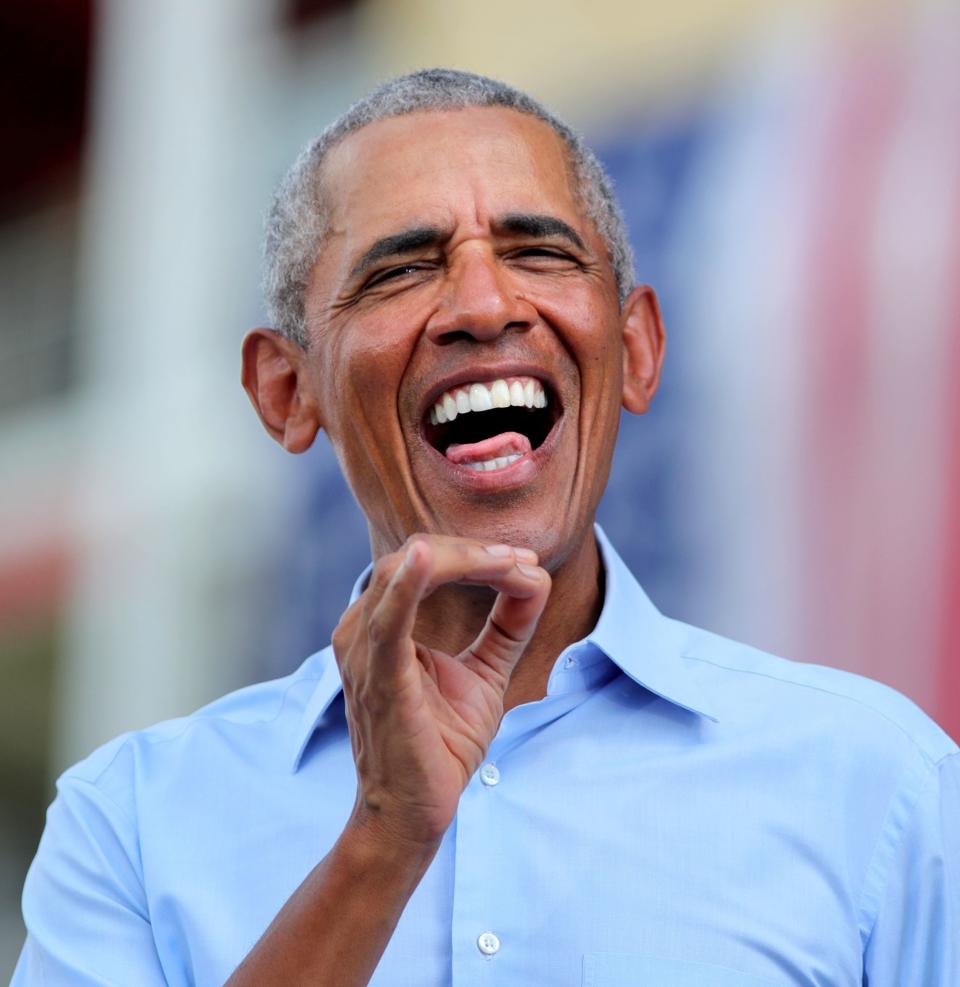Commentary: As 2020 winds down and Election Day nears, waiting. Patience is a virtue that doesn't always seem very American
Feel that?
That heaviness?
That’s the barometric pressure of an incoming election, and the anxiety of not knowing how it will turn out. See that other thing, off in the distance? That’s calm and clarity at the end of an impossible year — that’s the thing that T.S. Eliot called “the still point of the turning world.” That’s a ways off. So we wait. And while we wait, in line to vote on Nov. 3, for the results of an election that may not be decided on Nov. 3, for a vaccine, to return physically to classrooms, to enter a movie theater, for justice for Black Americans killed by police, to see loved ones again (maybe next Christmas), to be furloughed, to receive unemployment, while we wait for something resembling normal to return to everyday life, here’s a bit of Chicago history that’s rattling in my head:
At the Museum of Contemporary Art in 1975, the performance artist Chris Burden asked the MCA staff for a 4-foot by 8-foot sheet of glass and told the curator he would lie on the gallery floor beneath it. Dennis O’Shea, now the museum’s manager of technical production, then a member of the tech crew, remembers Burden being annoyed when he was asked exactly how long he planned to do this. Burden handed the MCA a statement which read that he was placing his life into their hands. “He expected the museum to throw him out,” O’Shea recalls. “And they didn’t.”
So Burden lay there, waiting.
And the audience filtered past, waiting.
Burden wet himself the first night, some viewers tossed coins at him, one man leaned in to say the artist was boring and everyone was waiting for him to do something, anything. “It became a big news item,” O’Shea said, “yet nobody at the museum knew what to do next. Until a doctor showed up and said Chris would die if he didn’t go to the bathroom or eat.” So, beside the artist, O’Shea placed a pitcher of water and a pan for urination. And with that simple act, after 45 hours and 10 minutes, Burden sat up. The show was over. Burden, who died in 2015, was just waiting for help.
I’ve thought a lot about that since last spring.
Partly because, as January Parkos Arnall, the MCA’s interim senior curator of performance and public practice, explained: “It was about our waiting for something, and the dread of not knowing if there is an end.” Which sounds familiar. But also, like Burden on the floor, we put ourselves here.
If the past year and the election season and the pandemic and the protests were defined by waiting, they’re also marked by our uneasy understanding of patience — the flip side of waiting.
We are still waiting for yesterday to return because we have shown due patience, and because, conversely, for others, patience ran out. To enter supermarkets and medical clinics and schools, we stand in lines now and wait, patiently. And yet that look in the eyes of students (and teachers) who are virtually learning is like a Nintendo energy meter measuring their collective patience and fast approaching zero. The whole Karen phenomenon of public freak-outs is partly a measure of our lack of fondness for waiting. The fact that it seems I can no longer take more than a breath at a green light before someone honks, that’s about patience — as is my honk at the driver in front of me reading texts. Their iPhone, a cure for their own impatience, means I wait, growing impatient.
“Take elections, a prime example of something where wait times produce frustration,” said Jason Farman, author “Delayed Response: The Art of Waiting From the Ancient to the Instant World” and director of the design cultures and creativity program at the University of Maryland. “The complexity of elections isn’t something most of us completely understand so when it takes longer than we’re used to seeing, it builds anxiety. I think we’re all about to experience that again, so I think the public would benefit from some expectation setting. If we just called this November ‘Election Month,’ see, then that’s suddenly a very different set of expectations.”
He said the way to think of Election Night is to think a buffering icon.
Waiting … waiting …
As a measuring stick of impatience, you might also consider that moment in late May when the White House saw protesters tear-gassed and cleared a park so the president could hold a Bible for a photo. It was a low point in waiting. Though in an arguably more existential way, so was the sadly ironic news that “A Charlie Brown Christmas” and “It’s the Great Pumpkin, Charlie Brown” would be shown only on Apple TV+ from now on: In other words, a pair of soothing and deliberately paced, nearly meditative, animated specials — both of which had once required generations of viewers to wait all year for single 30-minute network windows to catch — will no longer be found on broadcast television because audiences want everything faster, on-demand.
SIGH.
Daniel Eisenberg, a professor of film, video and new media at the School of the Art Institute of Chicago, teaches a course about time and its relationship to art. Early into the pandemic, watching how we were handling ourselves, he began thinking of Luis Bunuel’s 1962 classic “The Exterminating Angel.” “It’s about these friends in a fancy mansion who find they can’t leave, and don’t know why they can’t leave, but finally they are released from this unknown bondage and go into a church to give thanks, and find themselves locked in the church. I think that film is really instructive as a way to see this somewhat predictable time we are living in. We won’t get over this until we get over our frame of mind. We are trained to always accelerate and go forward. This is a moment requiring something different. A virus doesn’t have a consciousness. It just is. We need to see it as no different than a tree. We think we can control the natural world. We can’t. So we have to figure out our place — and frankly, that is a discipline we are not prone to do.”
Our history, in a way, is a history of waiting.
Postage stamps and plumbing and the wheel are, fundamentally, about managing time; at the turn of the 20th century, Chicago was so enthusiastic by the potential for pneumatic tubes that one inventor mailed his 13-year-old son inside a tube, just to prove their safety as a mode of travel. Time, as you have probably heard, is an artificial construct itself, a man-made conceit. Yet we’ve altered our relationship to it so radically we now distinguish time from “real time.” “History is about attempts at getting rid of waiting,” Farman said, “and you could chart it as the technologies we invent to save time.” Understanding history then is understanding a different way of being. Occasionally when I am using the map app on my phone to plot a long drive, for fun I estimate the trip using the walking option. Try this, it’s a hoot. According to my iPhone, if I walk from Chicago to Detroit, without taking a break, it’ll take four days — six, if I decide to walk to Minneapolis instead.
Weirdly, I fantasize about following through.
Religion, after all, teaches us that waiting is a natural state. Faith itself is a form of patience.
“Yet patience, in philosophy, is one of the trickier things to pin down,” said Bart Schultz, a senior lecturer of philosophy and director of the Civic Knowledge Project at the University of Chicago. “It crops up in every major religious tradition as a positive quality yet works often paradoxically.” He notes Martin Luther King, Jr.’s 1964 book “Why We Can’t Wait” as a fine argument against patience. Civil rights leaders in the 1960s — not unlike Black Lives Matter leaders today — were often urged to be patient. “But if someone counsels patience, it’s usually a politically backwards move. It’s smarter to scrutinize patience when it’s being applied to a social movement that’s time has come.”
So then, patience is not a virtue?
“I’d press hard against it,” he said.
Voters are often asked to show patience with long lines on cold November election days, and yet those lines seem to be more common in marginalized communities. For his 2015 Court Theatre production of “Waiting for Godot” — a play famously about waiting for whatever happens next — director Ron OJ Parson used an entirely Black cast to reframe Samuel Beckett’s surreal milestone as more of a story about social progress perpetually delayed. “Let me tell you, when we did that show, the protests in Ferguson were going on, the Laquan McDonald shooting just happened, so rehearsals got emotional. It seemed to become about waiting for justice, and for the solution to the turmoil in life. I tried encouraging the actors to really embrace the moment. When you’re a Black director in theater you’re pigeonholed — people in the Black community would ask why I was doing Beckett. But you want to stretch, and yet here’s a play partly about patience, which was something that ran out for people — just as it ran out last summer for a lot of people.”
Patience, of course, is generally sold as positive, upbeat.
It pays to be patient, we’re told. Michael Jordan, in a moment of humility, recently lamented that he never coached because he lacks the patience for the job. Scientists have asked for patience so that their vaccine trials are safe. Chicago police were thanked (by their commander) for showing patience towards that guy who dangled off Trump Tower for 13 hours. A common assignment in art schools is to chose a single painting or sculpture in a museum, then study it in person for hours at a time, to wait and linger then wait some more, to allow the time it takes for the work to reveal itself.
A hallmark of the golden age of ‘60s and ‘70s filmmaking was the long contemplative take, silent and still. One of my favorite movie scenes comes at the end of the original “Halloween” (1978), just as the film winds down: For a brief moment, John Carpenter returns to the locations where the story just happened, only now the camera lingers in empty spaces; only time and fate seem present. That said, 40 years later, it’s considered provocative to ask an audience to study anything with that kind of attention. To ask them to hold on through any length of a meander — to endure — sounds counterintuitive. Indeed, Donald Trump, for those reasons, is compared occasionally to performance artists: Those who get it, really get it, and those who don’t, feel exhaustion. Decades ago, when Chris Burden was asking audiences to sort out for themselves what was happening during one of his performances, the practice of durational performance — as the curatorial art world calls it — was often presented as a kind of dare to audiences, said Parkos Arnall of the MCA.
“Now a lot of the patience in (performance) art goes into making a connection with audiences,” she said, “and showing the benefits of perseverance and fostering the community who are there. It’s more like an invitation to dig deeper with an audience and give them time and conversation.” She mentions Folayemi Wilson and Norman Teague of the Chicago design studio blkHaUS who led a collection and conversation series around the city last year that encouraged everyday people to bring items from their personal collections to be cataloged, as a way of questioning traditional practices of what museums should be exhibiting.
Sessions were long and patient.
Researchers routinely cite the benefits of waiting and patience — to name two, having patience can not only help with depression but it can lead to more cooperation between strangers.
Still, Americans have other ideas.
“We don’t see waiting as productive,” Farman said. “We see it as wasted productivity. We think nothing valuable comes of waiting — which isn’t how people around the world see this.” In Japan and Italy, for instance, waiting is often woven into the rhythm of community life. Americans prefer to see waiting and patience as a kind of in-between time. So now that a pandemic is here: “Well, we haven’t done well. We haven’t embraced waiting as an investment in our social fabric, and we could have done so much more with a quarantine. Instead, we think it’s robbing of us of time. Yet if you think of how my time is wrapped up in your time — which it is — then it serves me well to wait.”
He says waiting is practice for hope.
But unlike hope, waiting is a natural state.
Remember this while you’re standing in line to vote. You’re doing the right thing. You’re taking the time, and you’re building your community. As Beckett wrote, “It’s already tomorrow.”
———
ABOUT THE WRITER
Christopher Borrelli is a reporter and columnist for the Chicago Tribune.
———
©2020 Chicago Tribune
Visit the Chicago Tribune at www.chicagotribune.com
Distributed by Tribune Content Agency, LLC.








